One of the things that can really make a piece of armour special is the edge treatments. This includes rolls, bevels, recesses and various other treatments.
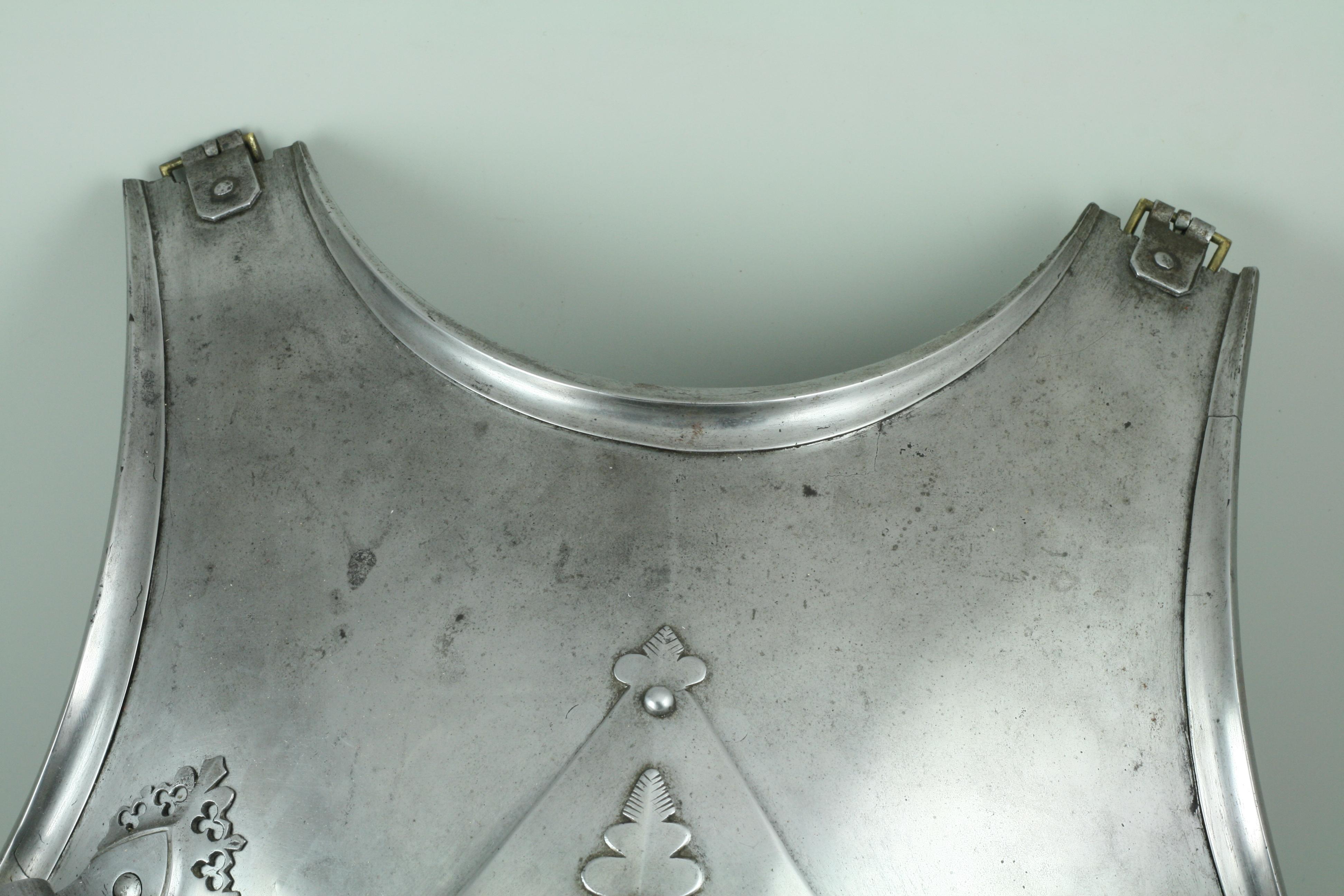
This breastplate from the late 15th c. has outward turned angular rolls. These have a distinct shape which is most often seen on Helmschmied pieces. The outer part of the roll curves outward until it reaches a sharp edge. Then the rest sweeps in as it approaches the base metal. The rolls like this in Vienna also have filed decoration accentuating the outer part of the roll. In this case the rolls are plain.

This breastplate illustrates a narrow expample of a typical late 15th c. "triangular" roll. It curves from the base metal out until it forms a crease and then comes straight back in to the base metal. You can see the shape of the edge at the nexk and the rounded part in the armhole roll.




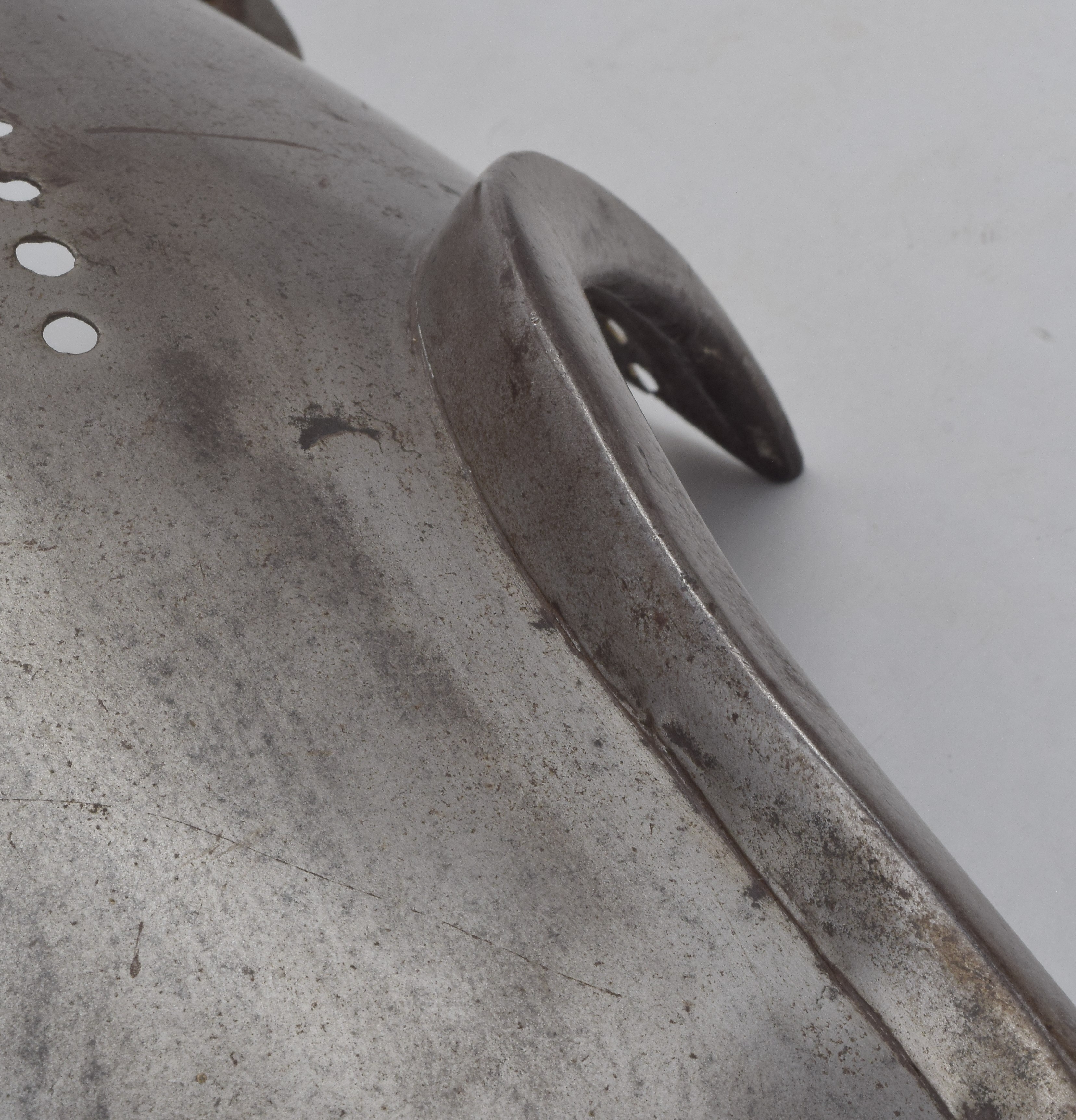
This breastplate illustrates the same form of roll as the previous breastplate, but the form is much more extreme. The rolls are much bigger and more aggressively tapered from the denter to the ends.


This breastplate illustrates the change from "out" to "in" turned rolls. It still has the angular shape that was typical in the 15th c. but the roll is built in the 16th c. way, by rolling the edge of the material in.




The neck roll on this breastplate illustrates the change that happens in the very early 16th c. From this time on rolls are generally formed "in" instead of "out." This means that the edge of the metail curves back inside instead of being pulled out and pushed back on top. We don't know why this change happened for sure, but it does allow the armorer to hide errors on the inside instead of having it show up right out where everyone can see it.
The arm "rolls" are examples of a relatively rare style that seems to have been common in the very late 15th and early 16th c. on lower end breastplates. They are not "rolls" in the typical sense. They are flaired out mimicing the normal profile of the front of the angular rolls, but then the edge just folds back flat.

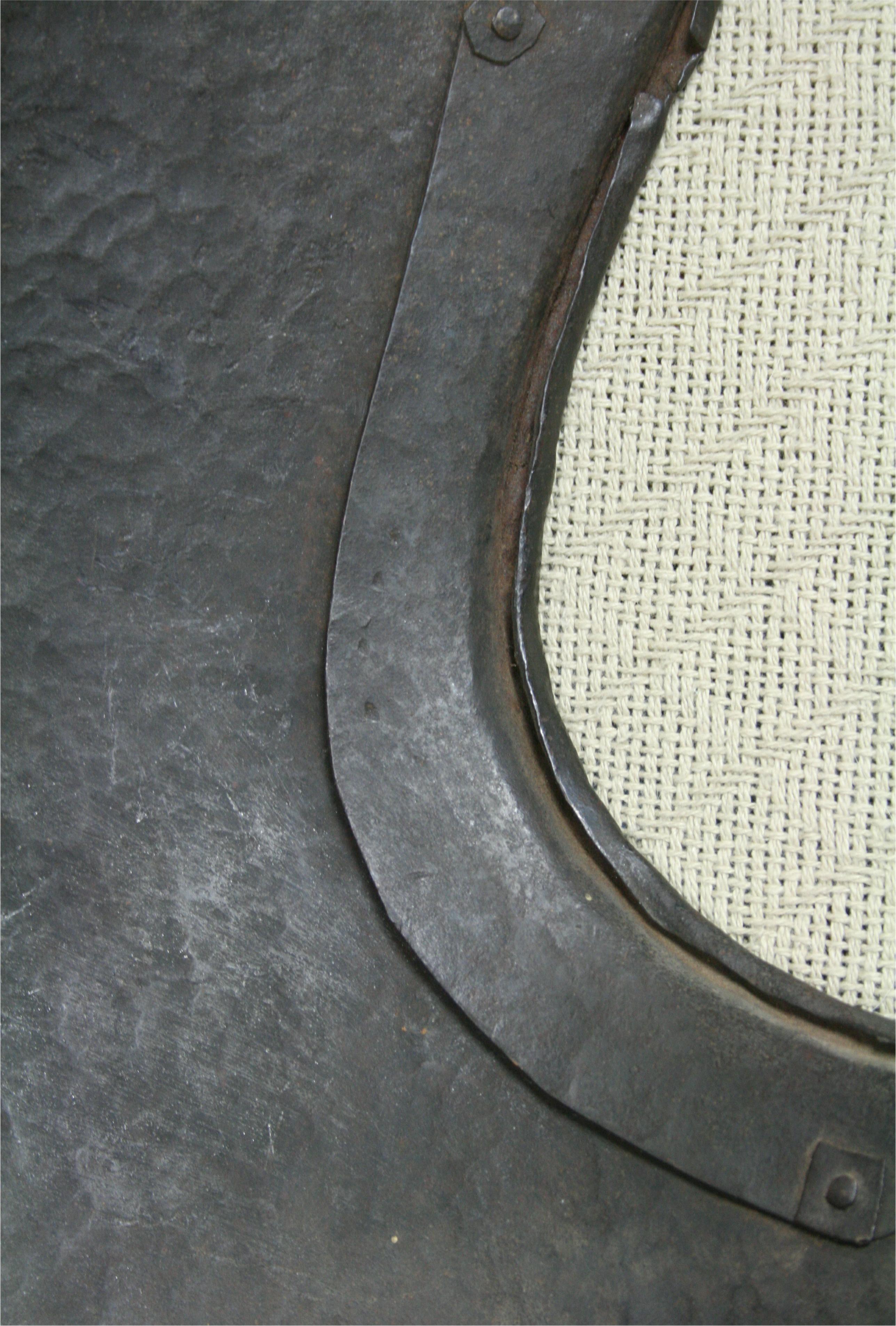
This illustrates "gussets" that often appear starting late in the 15th c. and which become very common in the early 16th c. The armhole is bordered by a separate curved plate that carries the rolled edge. In this case we can see the typical "inward" roll used in the 16th c. and later. We also see a relatively early "roped roll."
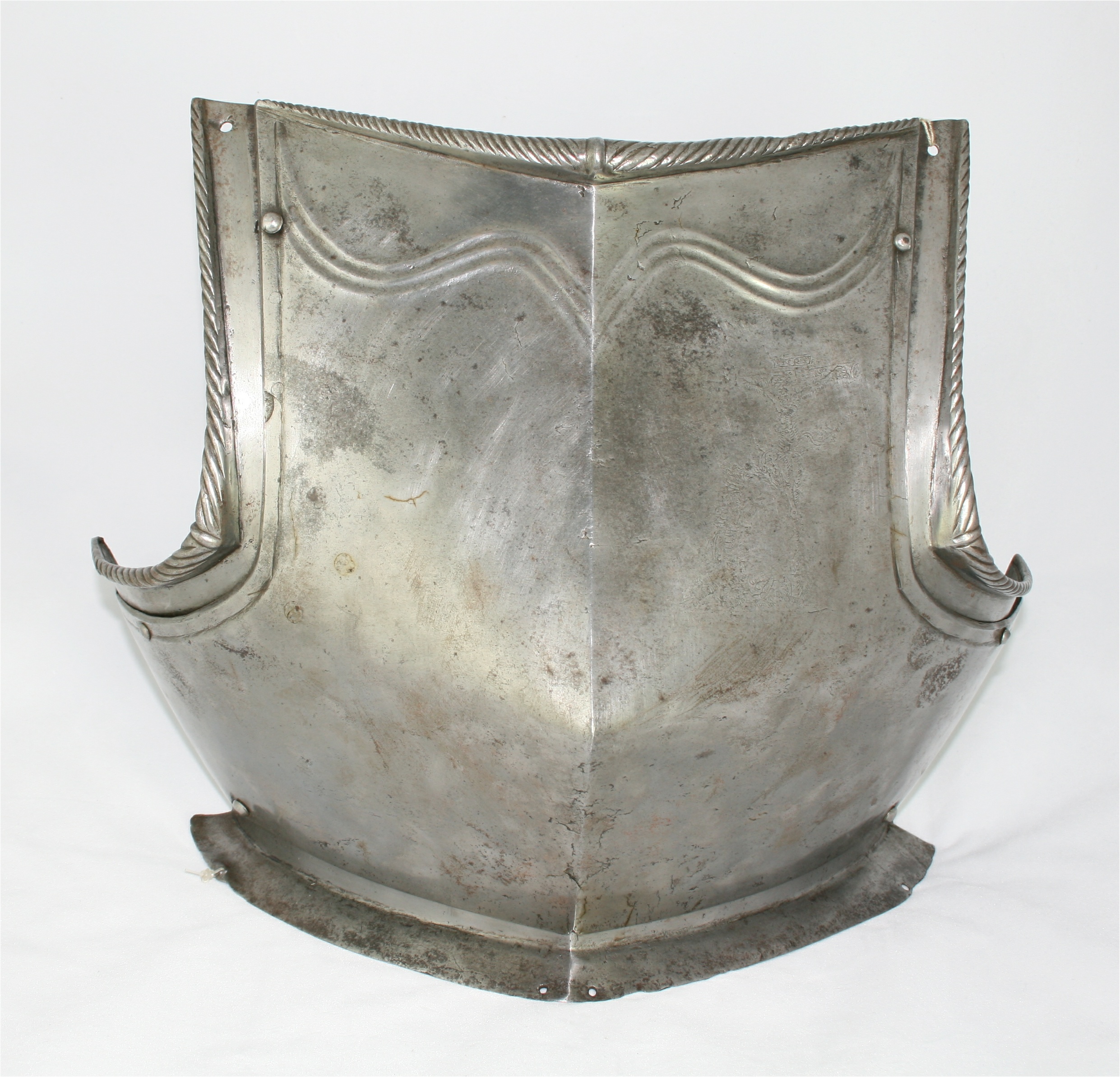
This shows a much nicer set of mid 16th c. rolls. They are rolled "in" as you would expect. Each tapers aggresively from the center to the ends, they are finely roped and each roll has an additional central bunp. The roping angles out from the central bump in opposite directions. This same transition happens on many German roped edges. On simple ones we just see a pair of parallel engraved lines, on nicer ones like this we have real shape.

Simple, mostly round inward turned rolls at the neck, arms and the base of the fauld flair. These are not very tall, and they are plain. This type of simple form appears most often on low end pieces and it becomes more common in the 17th c.

This shows a pretty typical round, inwardly turned roll at the neck. It tapers slightly from the center to the outer ends. The armholes are treated differently. In this case the edges are just flaired straight out from the breastplate.
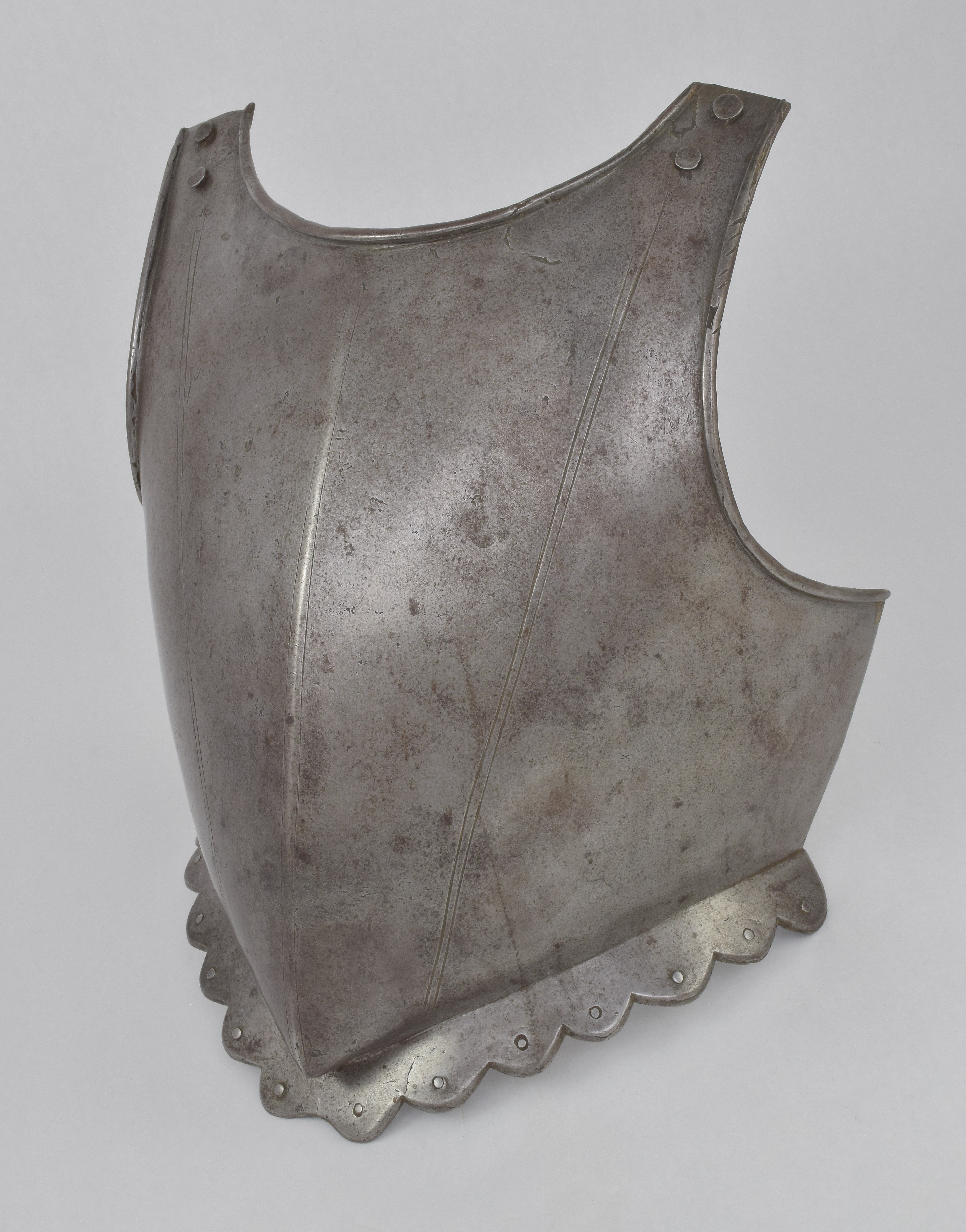
The normal way to make rolls in the late 16th century was "in" but sometimes when they were working with very thick plate they would just fold it over outwards and file/grind it to the right shape.

Some pieces in the 15th c. have cusped edges. The edge of the plate is bent down in a series of arcs.

The upper edge of the upper arm shows a tall, narrow outward turned roll. This style of arm was often worn in Italy with a wide mail sleeve over the upper arm. The tall roll likely served as a form of "stop rib" to prevent weapons from sliding up, and it provided extra stiffness.

Late 15th c. German gauntlets often have cuffs that are bordered by a very narrow outward turned roll. The roll comes to a point, and the roll material is notched to make this roll work. The edges of the plates where they overlap are often filed and pierced. This example shows a relatively simple form of the typical decoration at the wrist and the simple file work on the edges of the finger plates.

The outer edge of the plate is raised and accentuated by an engraved line.

This illustrates an aggresively rolled edge. The roll is turned inward, deeply roped and accented by parallel engraved lines. It also shows early 16th c. etching and parallel raised lines.



This illustrates how the edges of plates are treated on a "nice" maximilian armour. The edgs are beveled, but not just straight. Each flute is accented. The upper edge has a very narrow, straight round inward turned roll with a parallel recessed border.
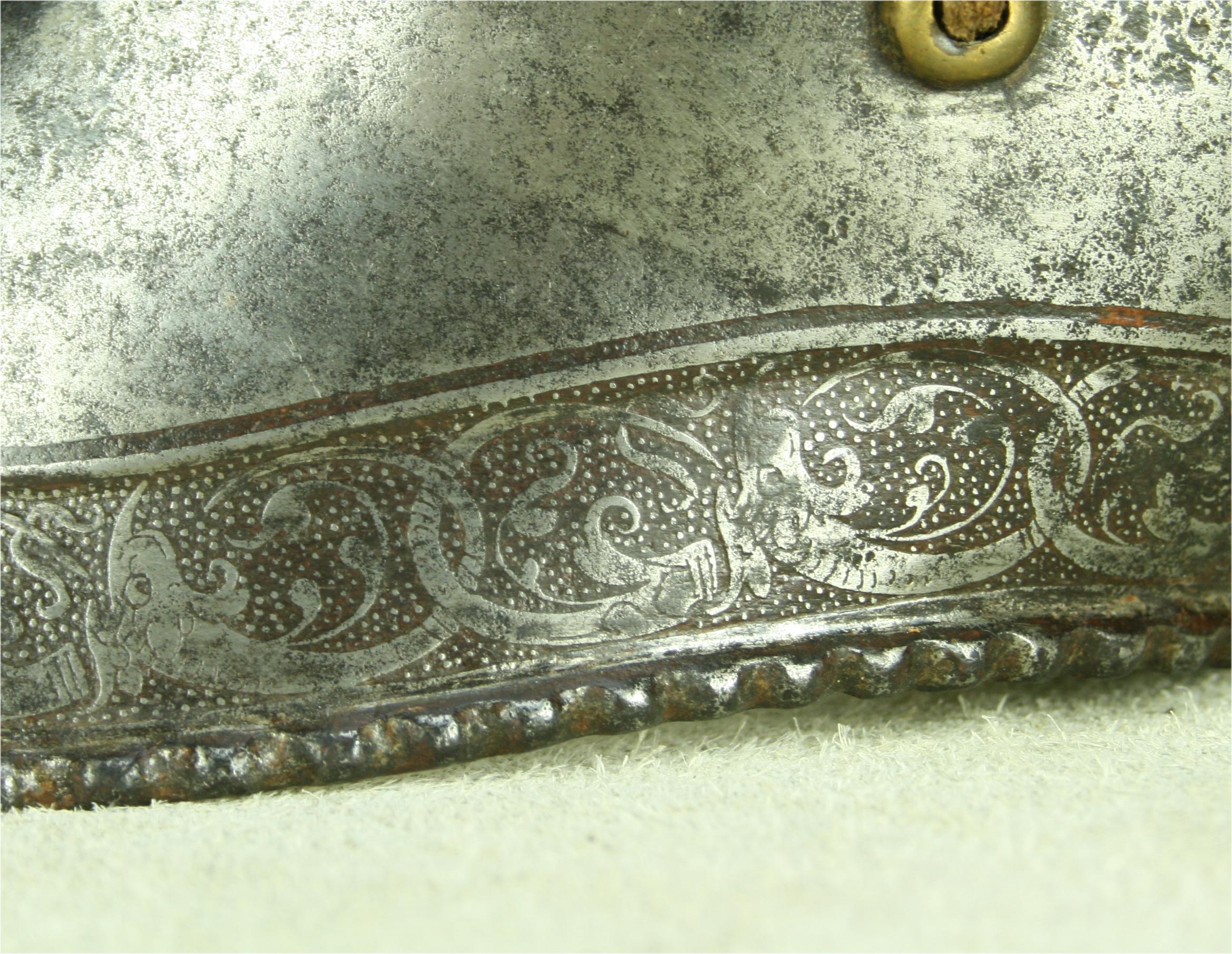
The outer edge is rolled inward over wire, then the roll is formed into a series of bumps. Inside this the elbow has an etched border that parallels the roll.


The upper edge of the collar has a full inward turn which is heavily roped and accented by parallel engraved lines. The upper edge of the main plates has a hollow half roll roped with pairs of diagonal lines. The outer edge of the main plates has a simple hollow half roll and a stepped recessed border. The use of a hollow half roll or just a plain edge is very common on the bottom edges of gorgets since they would be worn inside the breast and back plates. This allows it to fit closely to the body and minimizes the bulk inside the breastplate. Also note the edge treatment on the small plates. They are bevelled and notched at each flute.
This also shows the bottom edge of the main plate of a breastplate where the file notches are similar to those on the small gorget plates.

The outer edge and neck are rolled inward forming a very rounded roll. It is bordered by a line of brass capped iron rivets which secure a fabric border which extends past the edge of the gorget and which are cut into the form of rounded piccadills. They are accented with metalic thread. Having a full roll at the outer edge of a gorget's main plates is not common until the 17th c. when gorgets are designed to be used without a breastplate. It isn't common to see a real, full roll on gorgets worn under a breastplate.


This shows how the edges of many plates are treated. They are usually bevelled back, often quite steeply. This edge is not from a high end or Princely armour, but it is from a pretty good one. The obvious grind/file lines in the bevel are very common, even on prett good armour. this same type of detail appears on pretty low end armour. This was just "something you have to do." This also shows some simple roping.
These are often more subtle than we would guess when looking at the piece from a distance.









